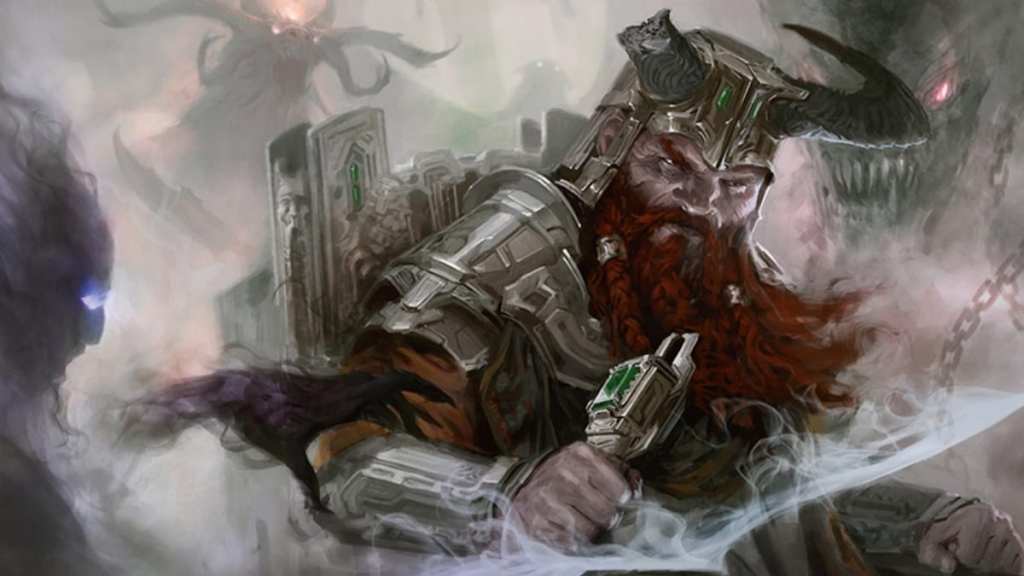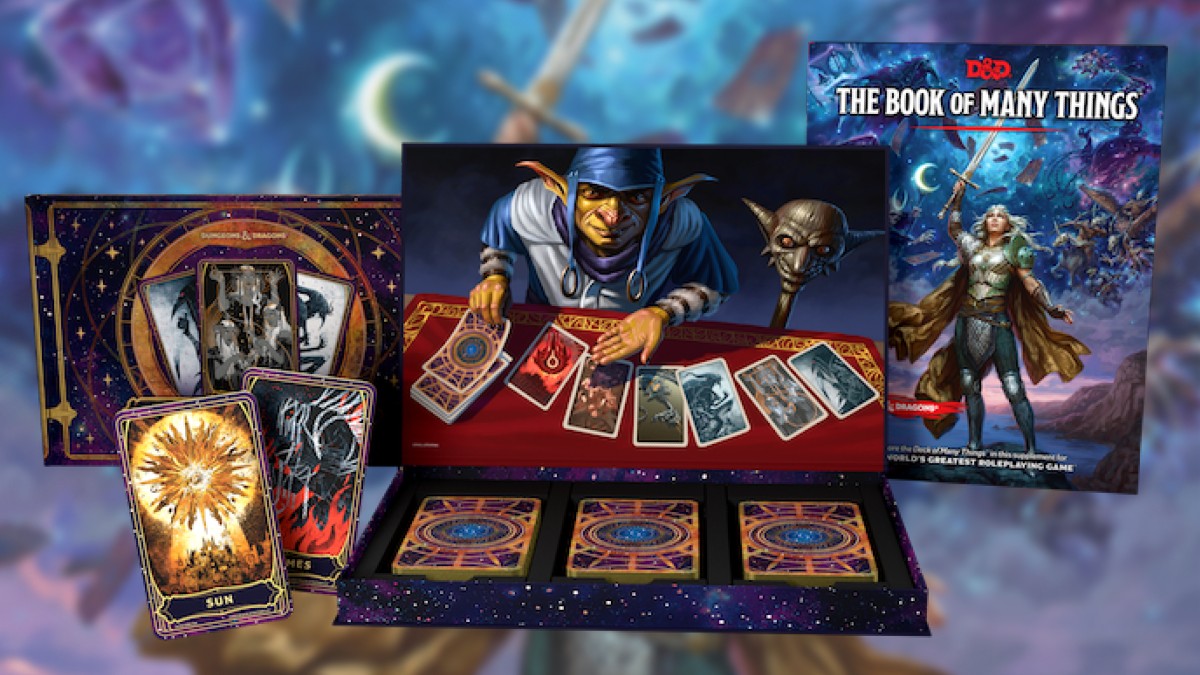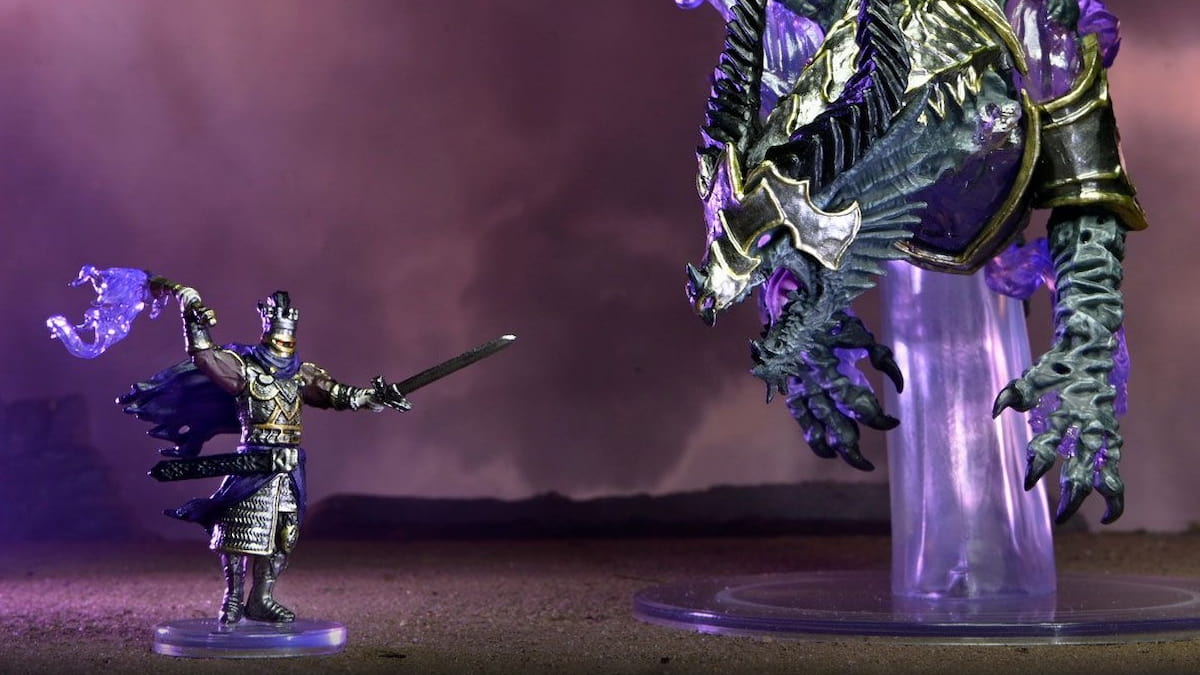In the Dungeons & Dragons multiverse, faith is the fuel of the gods, and the power of prayer is the source of divinity, with deities then sharing their magic with their followers as a reward for their service. The most ardent and devoted followers become Clerics, who wield divine magic like an artist uses a brush, acting as a conduit for something greater. For new D&D players, the Cleric might seem overwhelming at first, but they can be a simple class, assuming the player wants to stick to their role as the designated healer of the group.
The D&D Cleric, Everything You Need To Know

The stereotypical D&D Cleric is a priest in a heavy suit of armor who wields the power of the gods to cast divine spells, can fight on the front lines with the warriors, and uses their connection to their deity to perform small miracles on the battlefield. While their primary role in the group is the healer, the Cleric can perform many roles in the dungeon, helped by their Divine Domain subclass, which lets them define their role even further.
Related: One D&D’s New Warlock, Wizard, & Sorcerer Spells Make The Classes A Lot Stronger
One of the most important aspects of playing a successful Cleric is maintaining your safety. If you die, then who will heal your comrades? For this reason, you should allow allies to carry Healing Potions, as they can bring you up if you fall. This is less of a concern in a party with multiple healers, and you can afford to be cavalier with your spell slots if there is a Bard, Druid, Paladin, or Ranger in the group.
D&D Clerics Are Amazing Healers & Buffers, But Their Magic Has Lots Of Uses

Clerics are the best healers in D&D and the second-best buffing class, behind the Bard, with whom it shares many similarities. As the party’s Cleric, you are often expected to have spell slots saved up to cast Cure Wounds and Healing Word whenever the group takes a drubbing from someone and needs patching up. The D&D spell list supports this notion, with the Player’s Handbook stocking the Cleric up with restorative magic, and it’s hard to avoid becoming the party’s portable medkit.
Not all Clerics fall into this mold, however, as there are many gods in the D&D multiverse, each with their unique philosophies and magical gifts to give. Many other options are available if you want to play a Cleric but don’t want to be the healer in a tin can. The Cleric spell list has many divination spells, allowing them to uncover mysteries with their magic. They have spells that inflict status elements, like silence, hold person, and bestow curse, and subclass abilities that let them perform all kinds of amazing feats in combat.
In many ways, the Cleric is a class dedicated to one concept, with worshipers of the war gods loving to fight, worshipers of nature gods protecting nature, and so on. Luckily, many deities exist in the multiverse, so many options exist to accommodate the type of character you wish to play. You can even eschew the gods altogether and worship the pure force of good, neutrality, or evil, though don’t expect such abstract concepts to step in and save your behind when you need them.
Easy Character Race Choices For The D&D Cleric

In the pre-Tasha’s Cauldron of Everything era, there weren’t many races that offered a bonus to the Wisdom stat, so there weren’t many standout choices for the Cleric class. Nowadays, players can distribute their stat bonuses however they wish, so the field is much more open for budding priests.
In terms of the Player’s Handbook races, the hill dwarf is an excellent choice due to its survivability and resistance to poison damage; all varieties of gnomes get Gnome Cunning, giving them Advantage on saving throws against most debilitating spells; and tieflings get fire resistance and can punish enemies that get close with their Infernal Legacy feature.
Outside of the Player’s Handbook, the races in Mordenkainen Presents: Monsters of the Multiverse have the aasimar, which gets the Healing Hands feature, giving them some extra restorative power; the goliath has resistance to cold and can tank damage with its Stone’s Endurance feature; and the yuan-ti have resistance to poison and Advantage on all spell saving throws.
How To Use The D&D Cleric’s Class Abilities

Outside of their spells and subclass features, Clerics only have one other low-level ability: Channel Divinity at level 2. This allows the Cleric to funnel holy or unholy magic for some purpose, but they’re limited to doing it once per long rest, so players need to be careful about how they use it. In many cases, Channel Divinity powers the Cleric’s Divine Domain subclass feature, but there is another use for it: Turn Undead.
In D&D 5E, the Cleric uses Turn Undead to force all undead monsters to make a Wisdom saving throw. If they fail the saving throw, they are considered turned for one minute, and they must flee the Cleric until the duration of the effect is up or until they take damage.
The most obvious use for Turn Undead is holding back a zombie horde so the party can escape. The other primary use is to hold back enemies so that the party can pick them off individually, which they should hopefully be able to do in ten rounds. They can also wait until the enemy is far enough away so that they can blast it with ranged attacks/spells, as it will likely die before returning to melee range again.
Best D&D Cleric Spells & Combos To Use

Clerics are primary spellcasters, meaning they get lots of slots to use for casting and can memorize many spells. Like the other primary spellcasters, a Cleric can prepare a number of spells equal to their level plus their Wisdom modifier. These can be changed when the character takes a long rest, so make sure to inform your DM when you want to switch spells.
These are the best Cantrips for the Cleric to select:
- Sacred Flame – An offensive Cantrip that requires a saving throw instead of an attack roll, so it can bypass things like cover. It also deals radiant damage, which can be helpful against the undead.
- Spare the Dying – A Cleric-exclusive Cantrip that can stabilize characters, though healing is often preferred mid-battle.
- Guidance – Gives an ally a d4 on an ability check within the next minute, which remains useful throughout the campaign.
- Resistance – Similar to Guidance, except it gives a d4 to saving throws, which is a helpful buff to give to a character when entering a battle.
The best level 1 Cleric spells are:
- Cure Wounds – Your bread and butter healing spell. You have to touch someone to use it, so there could be a risk in combat, but it heals a lot, especially when cast with a higher-level slot.
- Healing Word – It doesn’t heal as much as Cure Wounds, but it can be used from range and cast in the same turn as a Cantrip, giving you a chance to throw out a Sacred Flame in the same turn.
- Guiding Bolt – A fantastic attack roll spell that deals 4d6 radiant damage and grants Advantage on the next attack roll against the target until the end of your following turn.
- Sanctuary – This can be used on the Cleric to shield them, as enemies need to pass a Wisdom saving throw to attack them. With this in effect, the Cleric can concentrate on healing the party members, as the effect only breaks if they interact with the enemy.
The best level 2 Cleric spells are:
- Spiritual Weapon – Conjures a magical weapon that can strike the enemy each turn, so long as the Cleric uses their Bonus Action to command it. As a Bonus Action spell, it can also be used in tandem with a Cantrip, but only on the first round.
- Silence – The ultimate low-level anti-spellcaster magic, as any spell with a verbal component, cannot be used inside its radius. There are few spells without verbal components in the game.
- Aid – Increases three allies’ maximum hit points by five and heals the same amount. What’s great about this spell is that it lasts 8 hours, allowing it to be cast early during a dungeon run.
- Lesser Restoration – A simple spell that cures most common status effects.
The best level 3 Cleric spells are:
- Dispel Magic – Possibly the best level 3 spell in the game due to its sheer amount of uses, as it can end all kinds of ongoing magical effects.
- Spirit Guardians – Creates a 15ft area around the caster where enemies have their movement halved, and they must pass Wisdom saving throw or take radiant damage when they enter.
- Revivify – The best shot you have at saving a party member who has died, so long as you can get to them within one minute.
- Mass Healing Word – An excellent pick-me-up for the whole party after they have taken a hit from an AoE spell, and it can be used in conjunction with a Cantrip.
Which D&D Cleric Subclass Should You Pick?

The Cleric chooses their subclass at level 1, which is their Divine Domain. These represent the individual portfolio of their deity, such as a worshiper of Thor choosing the Tempest Domain. The Cleric only gets two subclass features through levels 1-5, but their Domain also gives them some extra spells that are always considered prepared, and these extra effects.
- Knowledge – These Clerics gain two extra languages, two skill proficiencies with double the proficiency bonus, and Channel Divinity lets them become proficient in a skill or tool. This Domain is a great choice in a group without a Rogue or Wizard, as they can fill some of the roles that these would have outside of combat, especially when searching dungeons.
- Life – Pretty much the best default choice when you can’t think of anything else, as this Domain grants Heavy Armor Proficiency, heal an additional 2 points when casting restorative spells, and can use Channel Divinity with Preserve Life to heal five times the Cleric’s level to targets within 30ft. Life Domain is the most useful choice for a combat-heavy campaign, as they have an easier time keeping everyone alive.
- Light – These holy warriors gain the Light Cantrip, can use their Reaction to give an enemy Disadvantage on an attack within 30ft, and can use Channel Divinity with Radiance of Dawn, which banishes magical darkness and deals Radiant damage. This is a great choice for Underdark campaigns or adventures filled with lots of undead, as being able to throw out holy light shows is incredibly useful in those situations.
- Nature – These gain Heavy Armor Proficiency, a Druid Cantrip, a skill proficiency, and can use Channel Divinity to attempt to charm an animal or a plant. Just play a Druid, and don’t bother with its off-brand knockoff.
- Tempest – The storm lords gain Heavy Armor Proficiency, can use their Reaction to counter with lightning or thunder damage, and can use Channel Divinity to ensure that a lightning or thunder damage roll will deal maximum damage. This is an excellent choice for players who want more of an active combat role, with flashy displays of power that don’t burn spell slots to use.
- Trickery – The sneaky Clerics can give an ally Advantage on Dexterity (Stealth) checks for an hour and can use Channel Divinity to create an illusory duplicate of themselves that lasts for a minute. This is a perfect choice for intrigue-based adventures, like the ones seen in Keys From The Golden Vault, but these can still have their uses in campaigns that have the odd bit of sneaking, and they make a nice change of pace from the standard Cleric.
- War – The wannabe Paladins gain Heavy Armor Proficiency, the ability to perform attacks using their Bonus Action, and can use Channel Divinity to gain +10 to an attack roll. This is a great choice for a party with a backup healer, such as a Bard or a Druid, but be wary of taking it in groups where you’re the only bandaid, as you’ll be taking a lot of damage on the front lines.
Related: How One DnD Has Changed The Warlock Class
The poor Cleric must often fit into their chosen role for the party to survive, especially in dungeons. Ignoring this role can potentially lead to a TPK, depending on how cruel the DM is. This doesn’t mean that the Cleric is a boring class, as they have many options with their spells, and various concepts can be used to make the character you want to play. Just make sure always to have a Cure Wounds or a Healing Word prepared, as it might mean the difference between life and death for your intrepid group of adventurers.







Published: May 10, 2023 10:40 am